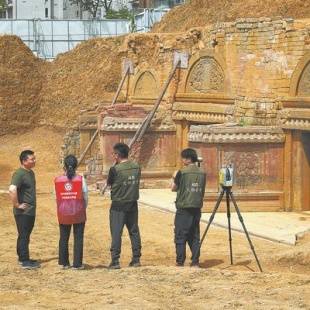On the trail of Prince Duan's tomb


A conservation team is conducting 3D-laser scanning of an ancient mausoleum, surrounded by high-rise residential complex — a striking contrast between centuries-old heritage and modern urban density.
Located in Jinjiang district, Chengdu, Sichuan province, the mausoleum belongs to Zhu Xuanqi, 11th-generation ruler of the Shu princely fiefdom (today's Sichuan) during the Ming Dynasty (1368-1644). His posthumous title is Duan, which means "principled".
The central tomb belongs to Prince Duan, flanked symmetrically by the tombs of his two consorts. All three brick-and-stone structures are of identical sizes and architectural layouts, sharing a unified burial mound. With intricate coffered ceilings, the tomb chambers were also engraved with exquisite carvings such as dragon reliefs.
It's one of Chengdu's new discoveries of the ongoing fourth national census on cultural relics in China.
Toward the end of 2023, as preparations were being made for an infrastructure project in the Panjiagou area, archaeological personnel conducted surveys before the land's transfer, bringing the tomb, which was hidden for 30 years, back into the light.
The site was first identified in the 1990s when the locals reported robbery of graves to the police. Cultural heritage professionals came and collected artifacts such as terracotta figures, before backfilling it for protection.
As the landscape and neighboring surroundings changed greatly, the tomb unfortunately vanished, though local authorities tried to locate it during the third national census on cultural relics in China, which was conducted from 2007 to 2011.





































